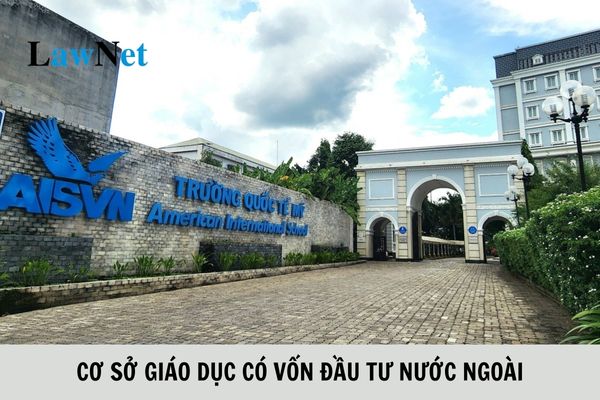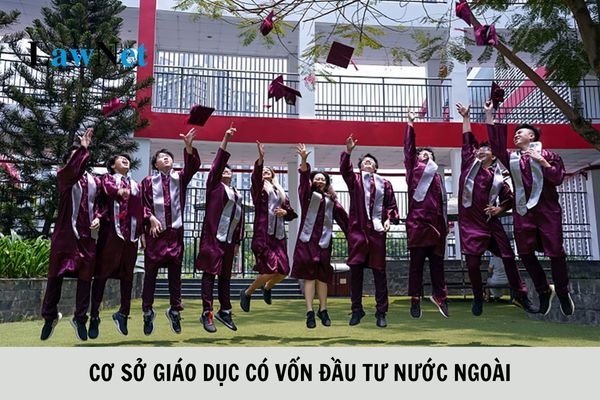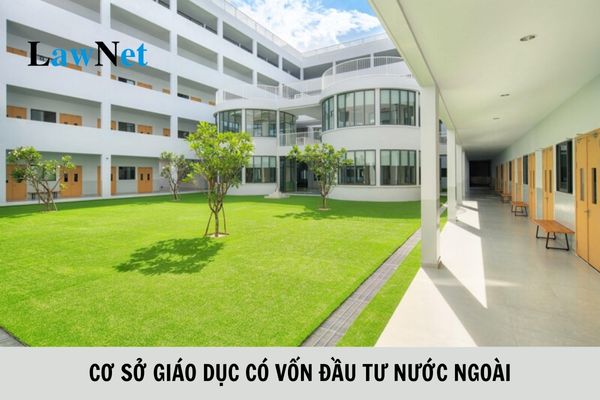Who has the authority to approve the establishment of educational institutions with foreign investment in Vietnam?
Who has the authority to approve the establishment of educational institutions with foreign investment in Vietnam?
Based on Article 40 of Decree 86/2018/ND-CP, the authority to permit the establishment of foreign-invested educational institutions is as follows:
Authority to Permit Establishment
The Prime Minister of the Government of Vietnam decides to permit the establishment of foreign-invested higher education institutions.
The Minister of Education and Training decides to permit the establishment of preschools and general education institutions upon the request of foreign diplomatic missions, and intergovernmental international organizations.
The Chairman of the Provincial People's Committee decides to permit the establishment of preschools and general education institutions, except for preschools and general education institutions as specified in Clause 2 of this Article.
Thus, the authority to permit the establishment of foreign-invested educational institutions is as follows:
- For the establishment of foreign-invested higher education institutions: the authority to permit the establishment lies with the Prime Minister of the Government of Vietnam;
- For the establishment of preschools and general education institutions upon the request of foreign diplomatic missions or intergovernmental international organizations: the authority to permit the establishment lies with the Minister of Education and Training;
- For the establishment of preschools and general education institutions, except those as requested by foreign diplomatic missions or intergovernmental international organizations: the authority to permit the establishment lies with the Chairman of the Provincial People's Committee.

Who has the authority to approve the establishment of educational institutions with foreign investment in Vietnam? (Image from the Internet)
What are the conditions for the infrastructure and equipment of foreign-invested educational institutions in Vietnam?
Based on Article 36 of Decree 86/2018/ND-CP, the conditions for infrastructure and equipment of foreign-invested educational institutions are as follows:
(1). For short-term training and retraining establishments:
- Having classrooms suitable for lighting, desks, chairs, equipment, and teaching materials;
- Having an average area for teaching and learning of at least 2.5 m² per learner for short-term training and retraining establishments;
- Having offices for the board of directors, leadership, teachers' room, library, and other functional rooms.
(2). For preschools:
- The school is centralized in one location, with a good environment. The construction area is determined based on the number of groups and children, with an average of at least 08 m²/child for urban, district-level town areas, and 12 m²/child for rural areas;
- Having classrooms, dormitories for children, and functional rooms that are suitable in terms of area, lighting, desks, chairs, equipment, and materials for child care and education
;- Having an office for the school, rooms for the administration board, administrative management, health room, security room, and rooms for staff that are suitable in terms of area, equipment, and materials for management, care, nurturing, and education of children;
- Having a clean water system, drainage system, suitable toilets with safety and cleanliness to meet all the school's activities;
- Having a kitchen organized according to a one-way operation process with suitable equipment and tools, ensuring food safety if the school organizes cooking for children;
- Having a playground, a wall surrounding the school area, a school gate with the school's nameplate as specified in Article 29 of Decree 86/2018/ND-CP;
- Having green trees in the school area. All construction designs and equipment, tools, toys of the school must ensure absolute safety for children.
(3). For general education institutions:
- The school is centralized in one location, with a good environment. The construction area is determined based on the number of classes and students and the regional characteristics, with an average of at least 06 m²/student for urban, district-level town areas, and 10 m²/student for rural areas;
- Having an average area for teaching and learning of at least 2.5 m²/student;
- Having an office for the school, administration board, teachers' room, and meeting room that are suitable;
- Having subject classrooms (for lower and upper secondary schools), library, desks, chairs, teaching equipment and materials, ensuring standards as per current regulations of the Ministry of Education and Training;
- Having multi-functional gyms, art education rooms, computer rooms, disability support rooms for inclusive education, school health room. Having a cafeteria, and a nap room if organizing semi-boarding learning;
- Having a clean water system, toilets suitable for the scale of the educational institution, ensuring the conditions and standards as per current regulations of the Ministry of Education and Training;
- Having a playground, sports fields, a parking area with an area of at least 30% of the total school area. Having a wall surrounding the school area, a school gate with the school's nameplate as specified in Article 29 of Decree 86/2018/ND-CP.
(4). For higher education institutions and branches of foreign-invested higher education institutions in Vietnam:
- The land area for constructing the school is at least 25 m²/student at the time of the highest scale in the school's development plan;
- The average construction area is at least 09 m²/student, including a learning area of at least 06 m²/student, and an accommodation and living area of at least 03 m²/student;
- Having sufficient lecture halls, classrooms, functional rooms that are suitable and meet training requirements according to the field and training organization method;
- Having sufficient office space, administrative areas, and management rooms ensuring the response to the organization structure of rooms, departments, faculties, and specializations, with an area of at least 08 m²/person;
- Having an assembly hall, library, laboratories, practical training facilities, and other facilities to meet the requirements of the training program and scientific-technological activities;
- Having dining facilities, buildings for entertainment, sports, cultural activities, and healthcare, service buildings to serve the living needs of staff, lecturers, and students;
- Having technical works area, parking lots for cars, motorbikes, and bicycles.
(5). Renting facilities:
Foreign-invested educational institutions are permitted to rent facilities on a stable basis for at least 05 years and must ensure the facilities meet the requirements set out in Clauses 1, 2, 3, and 4 of Article 36 of Decree 86/2018/ND-CP.
What are the conditions for permitting foreign-invested educational institutions to operate?
Based on Article 45 of Decree 86/2018/ND-CP, the conditions for permitting foreign-invested educational institutions to operate are as follows:
- Having a decision permitting the establishment of the educational institution or an investment registration certificate and business registration certificate for short-term training and retraining establishments.
- Having investment capital, facilities, equipment, educational programs, and teaching staff meeting the requirements specified in Articles 35, 36, 37, and 38 of Decree 86/2018/ND-CP.
- Having regulations on the organization and operation of the educational institution.




- What is the sample analysis of the Character "Mother Le" in "Nhà mẹ Lê"? What are the learning rights and obligations of 10th-grade students in Vietnam?
- Vietnam: What is the brief summary of the resistance against the Mongol-Yuan invasions? What are the conditions for 7th-grade students to be eligible for grade advancement?
- Vietnam: What are the top 3 sample social argumentative essays on perseverance as the key to success? What learning outcomes are required for writing content in the 7th-grade Literature curriculum?
- Vietnam: What are the sample descriptive essays on a favorite toy for 5th-grade students? What are the assessment criteria for 5th-grade students?
- Vietnam: What are the sample brief paragraphs showing the feeling for the Poem "Gặp lá cơm nếp"? What are the regulations on periodic assessment for 7th-grade students?
- Vietnam: What is the sample outline of an essay on recounting the story "The Legend of the Foeniculum Vulgare" for 5th-grade students? What types of essays are 5th-grade students required to be able to write?
- Vietnam: What are the guidelines for preparing a brief outline for an essay on retelling an experience for 4th-grade students? What learning outcomes are required for writing practice in the 4th-grade Vietnamese language curriculum?
- Vietnam: What are the sample 15 sample descriptive paragraphs on your house for 3rd-grade students? How many lessons are allocated for writing content in the 3rd-grade Vietnamese language curriculum?
- Vietnam: What are the guidelines for preparing the brief lesson "Giọt sương đêm" for 6th-grade students? What are the competency requirements in literature for 6th-grade students?
- What are the sample essays on sharing an experience with a family member for 6th-grade students in Vietnam? What elective subjects do 6th-grade students learn?

